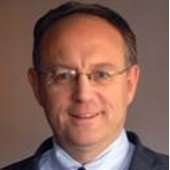 Greece and China stole the headlines, for weighty reasons, but back at home for the nation hearing the din of its fireworks die away, the Monday after the fourth-of-July weekend brought a fascinating turn in a long-running legal/financial/technological soap opera.
Greece and China stole the headlines, for weighty reasons, but back at home for the nation hearing the din of its fireworks die away, the Monday after the fourth-of-July weekend brought a fascinating turn in a long-running legal/financial/technological soap opera.
On the morning of July 6th, 2015, a judge in New York overturned a jury verdict against Sergei Aleynikov, the coder (“programmer” to old folk) who had originally been arrested by FBI agents, almost exactly six years before. That arrest took place as the coder made arrangements for an expected new job at Teza Technologies, to which new employer he was allegedly bringing code he had “stolen” from Goldman Sachs.
Readers will probably remember at least the major twists and turns of the subsequent litigation. A jury in the U.S. District Court of the District of Southern New York convicted Aleynikov in December 2010. He spent a year in prison, and then walked free due to a decision of the Second Circuit Court of Appeals.
Since then, New York County District Attorney Cyrus Vance Jr. has contested Aleynikov’s freedom at the state level. As we have noted here before, the state prosecution has been plagued with misfortune (or with the consequences of karma, as you will probably prefer to say if you think Aleynikov has been ill used) since at least June of last year, when his judge excluded from the state court much of the evidence the FBI had seized pursuant to the earlier prosecution.
Vance’s Case Falls Apart
In April 2015 the prosecution tried to put Spencer Lynch, a computer forensics expert, on the stand. But it hadn’t done the necessary paperwork to inform the defense of this witness, so the court excluded Lynch’s testimony, too.
After such foibles, it didn’t come as a surprise to many that in May the jurors went out for deliberations for eight days, during which time they repeatedly expressed confusion about their task. They brought their own troubles to an end by reaching a split verdict, one-of-everything-possible. They found the defendant guilty of one count; they announced their inability to reach a verdict on a second count; and they acquitted him outright on a third. By that time, the whole proceeding seemed to have descended into the realm of farce, and even the one conviction seemed an unlikely victory for the prosecution.
That one conviction, by the way, involved the theft of “secret scientific material,” which didn’t on its face seem quite coherent. The science of high frequency trading is rather well known, although the specifics of the engineering can be proprietary.
So the opinion by the presiding judge, the Hon. Daniel Conviser, setting aside that jury verdict on the morning of July 6, put a terminally-ill prosecution out of its misery. [That is Conviser’s visage above.]
This is of course grand news for Aleynikov. It’s worth mentioning that Michael Lewis, in Flash Boys, plausibly portrays Aleynikov as naïve about the world of financial speculation, and thus about the uses to which his work might be put. Aleynikov “preferred the deterministic world of programming to the pseudo-deterministic world of speculation,” as Lewis puts it, “and he never fully grasped the connection between his work and the Goldman traders’.”
Elements of Principle
Let’s remember, though, that there are elements of principle involved. Historians shall record that Goldman Sachs sought to hijack the machinery of sovereignty, in order to punish and deter competition. The more judgmental historians of posterity will cheer the defeat of that hijacking attempt.
Yes, there are some aspects of high-frequency trading that do seem dubious. Much HFT is arguably an effort to game a system that federal regulators, bumbling along, have only accidentally created, and the gaming is at the expense of the less sophisticated, in favor of those institutions that can hire and take advantage of the Aleynikovs of the world. Still: this wouldn’t justify making a criminal out of the coders involved. It might not even justify making criminals out of his former bosses at Goldman.
This is a victory for the spread of open source code. For if one drills down a bit into the facts of this case, it does appear that such proprietary material as Aleynikov did transfer to his personal computer got there as an unintended side-effect of transferring open-source code, and that (in the words of a document submitted to the original, federal, trial court), the “very existence of that open source code makes it impossible to conclude beyond a reasonable doubt that Aleynikov intended to steal proprietary code.”



